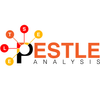Is your organization's cybersecurity compliant with industry regulations?
In today's digital landscape, compliance is not just a best practice; it is a legal requirement. A solid cybersecurity policy is essential to meet regulatory requirements and protect your organization from data breaches, legal penalties, and reputational damage.
Templates in cybersecurity policies provide useful tools with a structured framework that enables the company to follow laws and industry standards.
Flexible business templates allow for addressing risk management, employing employee requirements, and promoting compliance measures with corresponding solutions for swiftly reacting to new forms of cyber threats.
If you want to run a successful business and do not want to spend unnecessarily on penalties due to non-compliance with your documents and templates, it is high time you familiarize yourself with what they are and how they work.
Continue reading to find out how the cybersecurity policy templates may improve your current compliance management.
1. Time and Cost Efficiency
Creating complete cybersecurity policies from scratch can cost your organization a lot of time and money. With ready-to-use cybersecurity policy templates, you'll be able to save the most valuable resource of all—time—and simplify the process.
Such templates will be easily tailored to your organization's needs in less time. Furthermore, such a course drastically cuts the expenses initially directed toward creating a policy so you can focus your time and effort on other operational key areas.
Whether it is data protection, incident response, or access control, cybersecurity policy templates provide a sound base for your security posture, resulting in more efficiency and better security in organizations.
This allows you to reallocate resources where it matters, ensuring that your team is working on higher-priority tasks to drive business growth.
2. Risk Management and Mitigation
Effective risk management and mitigation are part of your cybersecurity strategy. Furthermore, the cybersecurity policy given is a basis for evaluating the possible threats and adopting the necessary preventive actions.
Note down all security measures, risk analysis methods, and responses to security incidences given the threats. Effective risk management will assist you in clarifying authority so that your team shall be in a position to respond appropriately to potential threats in a proper and timely manner.
The constant evaluation and updating of cybersecurity help to defend against evolving cyber threats and limit the effects of a cyberattack. Therefore, appropriate policies must be implemented to maintain security since these endanger the life of your entity to bear comprehensive, operational, and reputational costs.
3. Faster Audit Readiness
When auditors prepare for compliance audits, they will review your cybersecurity policies and procedures to find out if they align with the regulatory requirements. Well-structured policies can make you audit-ready at all times, making the process quite smooth.
More than just a framework, clear and comprehensive cybersecurity policies give you an easy-to-follow pathway to demonstrate that your organization abides by the necessary standards.
It is relatively easy to demonstrate to the auditors that compliance risks and security controls are managed effectively under the right policies. This will help to avoid accusations of negligence in the performance of the company's legal requirements, and thus, the penalties that accompany this will be avoided.
Ultimately, this preparation will save you time and effort in audit processes and allow you to focus on other aspects of the organization.
4. Enhanced Data Protection
Data protection forms a part of your critical cybersecurity compliance. With the rising tide of sensitive data that an organization handles, the need to have proper policies increases exponentially to safeguard personal and corporate information.
The compliance of data handling, storage, and protection guidelines ensures sensitive information is protected against unauthorized access, breach, or loss.
With such policies, you will be able to meet critical data protection rules, such as GDPR and CCPA, and significantly reduce the risks of a data breach.
The security, integrity, and availability of essential information become much more manageable with good policy documents addressing key concerns.
On top of meeting regulations, by having a clear data security framework, you show respect toward clients, partners, and every stakeholder out there.
Doing so creates a much safer environment for your data and shows respect for protecting sensitive information.
5. Effective Incident Response Planning
A clearly defined incident response plan is one of the key elements of your cybersecurity compliance. Effective incident response ensures that your organization can respond quickly and effectively to any security breach or data compromise.
You can identify, report, and mitigate security incidents much more clearly with structured procedures for these purposes. The procedures also contain protocols for communication when it is necessary to alert relevant stakeholders and regulatory bodies.
With a good incident response plan in place, you can reduce the effect of security threats, ensure the reporting requirements are met, and show the organization's commitment to dealing with problems in time.
Having such a plan helps protect sensitive data and systems and builds credibility with customers, partners, and regulators. Moreover, by implementing such a plan, you will reduce any potential damage to your organization, minimizing the impact of cyber incidents.
This proactive approach also prepares your organization for future risks, enabling it to respond effectively and confidently when facing cyber threats.
Conclusion
Designing and implementing organizational cybersecurity policies is a wise strategy to improve its compliance level. They help you greatly reduce time and costs, arrange risk control, and be prepared for audits anytime.
In addition, they also strengthen the protection of data and establish efficient processes in case of an incident. Structured policies demonstrate your respect for legal requirements and the protection of sensitive information while fostering positive client and partner relationships.
With these templates at your disposal, your organization is ready to counter potential threats to cybersecurity. This will enable you and your team to work on the advancement of your company with greater assurance.


